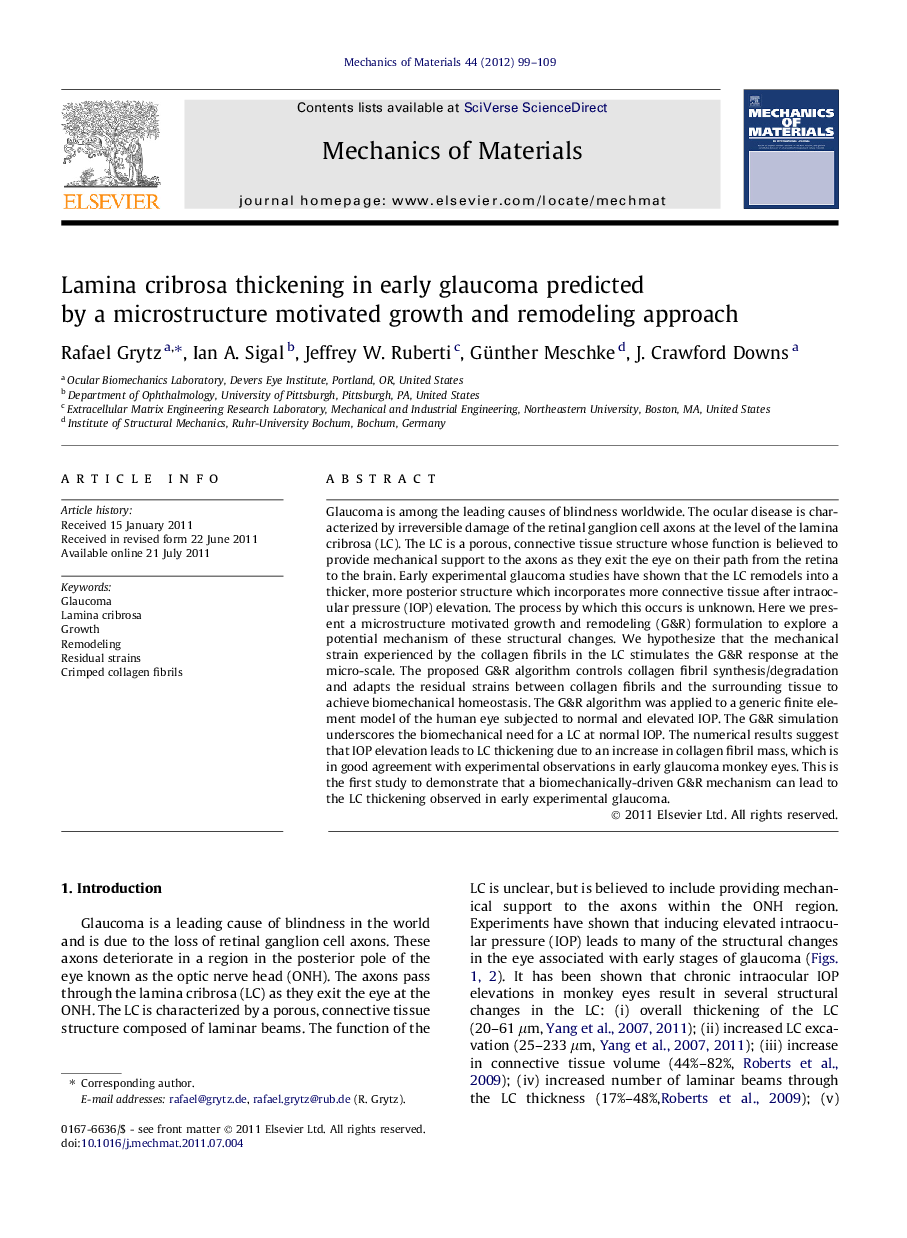| Article ID | Journal | Published Year | Pages | File Type |
|---|---|---|---|---|
| 800738 | Mechanics of Materials | 2012 | 11 Pages |
Glaucoma is among the leading causes of blindness worldwide. The ocular disease is characterized by irreversible damage of the retinal ganglion cell axons at the level of the lamina cribrosa (LC). The LC is a porous, connective tissue structure whose function is believed to provide mechanical support to the axons as they exit the eye on their path from the retina to the brain. Early experimental glaucoma studies have shown that the LC remodels into a thicker, more posterior structure which incorporates more connective tissue after intraocular pressure (IOP) elevation. The process by which this occurs is unknown. Here we present a microstructure motivated growth and remodeling (G&R) formulation to explore a potential mechanism of these structural changes. We hypothesize that the mechanical strain experienced by the collagen fibrils in the LC stimulates the G&R response at the micro-scale. The proposed G&R algorithm controls collagen fibril synthesis/degradation and adapts the residual strains between collagen fibrils and the surrounding tissue to achieve biomechanical homeostasis. The G&R algorithm was applied to a generic finite element model of the human eye subjected to normal and elevated IOP. The G&R simulation underscores the biomechanical need for a LC at normal IOP. The numerical results suggest that IOP elevation leads to LC thickening due to an increase in collagen fibril mass, which is in good agreement with experimental observations in early glaucoma monkey eyes. This is the first study to demonstrate that a biomechanically-driven G&R mechanism can lead to the LC thickening observed in early experimental glaucoma.
